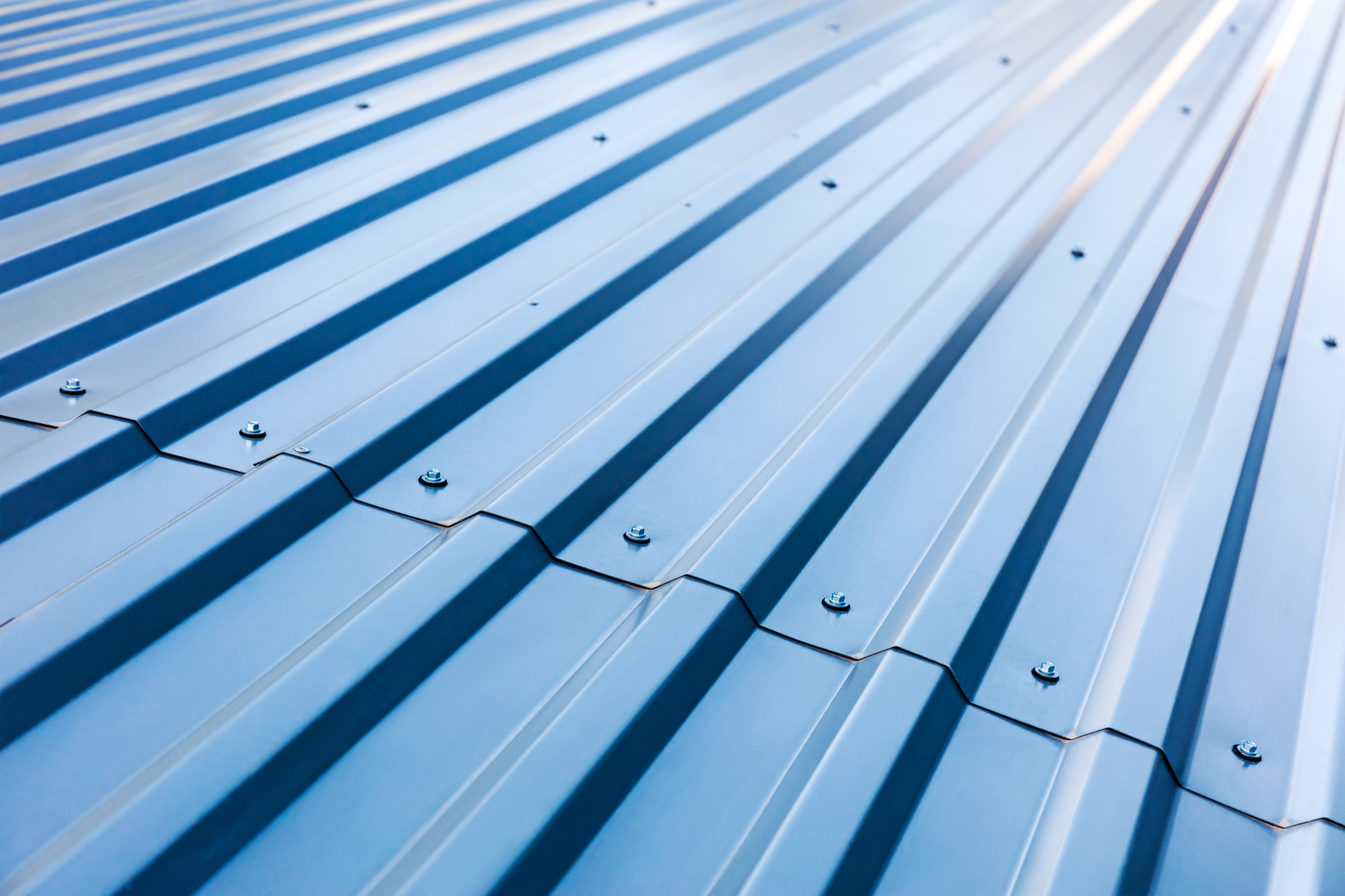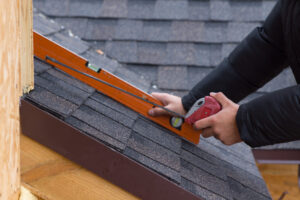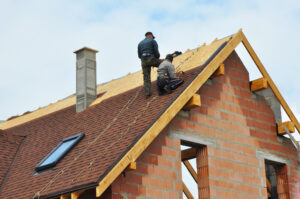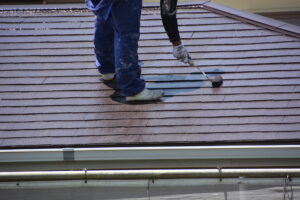Looking to learn how to install metal roofing? Wondering what roofing choice is right for your home or business?
Drive down any road in suburbia and you can see for yourself the beauty and style of a well-placed metal roof. Whether copper, aluminum, corrugated steel, or tin, this type of roofing can add significant value to your building.
For that matter, metal roofing is one of the most cost-efficient and lightweight roofing materials available today. Being so light means that you can install metal roofing over your existing roof as well.
Even with all the benefits, the prospect of actually going through with the project can seem daunting. This guide will help put you on the right path.
Read on to get an idea of exactly how to spruce up your home or commercial building with a beautiful new roof.
Safety First
Whether your roof is at a 1/12 pitch (the flattest it can be until completely flat) or at an 18/12 pitch (steep enough to make your knees week), you’ll still be working up high. This creates fall hazards, and it leaves you open to harsh elements and electrical accidents from low hanging wires.
Before you do anything, make sure to trim any branches that impede your workspace. If there are power lines that hang close enough that you can touch them, it would be a good idea to have them moved.
In fact, if a hot wire touches asphalt shingles in the right way, you could have a big problem on your hands. You can contact Missouri Power and Light Co. to have them install a guard over the problem area.
Insulated work gloves and goggles should be part of any Do-It-Yourselfer’s toolbox. Be sure to wear these throughout the working process.
The ladder you use needs to be anchored at the top and bottom. You can use special equipment like a ladder lock, or tie off the bottom to a secure structure. Another option is to tie it to a stake in the ground.
Last but not least, you’ll need to secure yourself from falling. A harness and vertical lifeline can be pricey, but worth avoiding a trip to the hospital.
Order Your Metal Roofing
Measure your roof so you know the square foot of metal roofing sheets you’ll need to order. It’s a good idea to add 10% to that number to account for human error.
Then, decide what kind of roof material you would like. If you are laying your new roof over asphalt, this choice provides the best noise cancellation.
Aluminum is ultra-light and resistant to rust. Another advantage is that it’s fire-, wind-, and rot-resistant.
A big advantage of zinc metal is that it’s environmentally friendly. It’s easy to recycle, and it boasts the longest life span of all roofing materials. A well-laid zinc roof can last up to 100 years!
Other materials you’ll need to get the job done include the following:
- A ladder
- A power drill
- 1 1/4 inch roofing nails
- Metal roofing screws
- Jigsaw or circular saw
- Tin snips
Address the Existing Roof
You have the option of laying down your metal roofing sheets over existing shingles or removing the old shingles altogether. Be sure to refer to your local building codes first. Some areas may require a full teardown of the old roof.
If you’re doing a full removal of your old shingles, then make sure you have a dumpster in your yard nearby. You can toss them down for easy cleanup. It’s also a good idea to mark off a “fall area” around your building to warn others.
Another good tip is to set up a scaffolding board to catch falling shingles in a small pile. You’ll be working from top to bottom, so they’ll naturally want to slide that way.
It’s almost like peeling a really ugly fruit.
Inside you will see the roof sheathing. This is the layer of wood boards that buffer between your roof’s framework and your shingles. This will stay in place and be the staging deck for your new roof.
Make sure to remove any old flashing, venting, or loose nails. Then go from top to bottom and give the bare deck a good sweeping. And voila! You’re ready to go
Install Metal Roofing
First, use your 1 1/4 inch nails to install some metal eve flashing. This protects against moisture, damage, and nasty critters like wasps or dirt dobbers from making a home under your new roof. It also makes an eye-pleasing, finished look to your roof panels.
Secure yourself using your fall prevention equipment, and align the first metal roof panel. It should overlap your edging by about 1/2 inch to 3/4 inch. If you’re working with metal panels, make sure that the larger edge is positioned so that it overlaps the smaller edge of the next panel.
Roofing screws and sealant will be your best friends during this step. You’ll secure the screws along the rib of the panel, and use the sealant between each overlapping edge. Be sure the sealant is 100 percent silicone for the best waterproofing and adhesion.
Your roof may need some shingles cut to fit specific angles. This is best done with a circular saw or jigsaw fitted with a metal cutting blade.
Be sure to wear fire-resistant clothing with long sleeves to protect your arms from bits of hot, flying metal.
For smaller, more detailed cutting, you can use tin snips. They are an inexpensive tool that can be held like a pair of scissors.
Continue to lay your shingles from top to bottom until your roof is covered on all planes.
How to Install Metal Roofing Over Shingles
Wondering how to install metal roofing over shingles? You’ll use most of the same techniques as if you were starting clean, but with a few variances.
First, you’ll need to put down a framework of 2×2’s. Secure the frame directly to the rafters and then screw the metal shingles directly to that wooden frame.
An interesting advantage to this is that it makes your roof even more durable. Having a metal roof screwed down to a framework that is further secured to the house allows your roof to withstand winds of up to 120 mph.
Let your Roof Breathe
Ventilation is important! No matter what material you use, installing a ventilation kit is one of the most important steps. A metal roof relies on what is called “static ventilation”.
Static ventilation means that the air flows naturally rather than by fans. Doing this the right way means that your attic won’t heat up so quickly in the summer and your air conditioner won’t have to work as hard. It also means your attic insulation can remain toasty and dry.
Stores like Lowe’s have great deals on roof ventilation kits and skill saws that can help cut away the opening needed.
The Finishing Touches
Last but not least, you’ll need to install flashing. Think of flashing as a protective border between your roof material and your other home structures. You’ll be laying down a metal border between the roof and your ventilation, your chimney, and any dormers.
If the border is on an incline, you’ll need to use step flashing. This is a technique that creates a “stair” look. Valley flashing can be used between two roof planes to protect that space from weather and water damage.
Water protection and direction is your primary concern here. Flashing makes things look a little more finished and polished, of course, but its main job is to redirect rainwater and keep the structure under your roof shingles dry. This will prevent moisture and mold from building up.
Aftercare
After everything is done, you’ll want to protect your investment. Metal plates and shingles need less maintenance than their asphalt counterparts, but life does happen.
Icy conditions, heavy storms, and fallen tree branches make DIY repairs especially hazardous. It’s helpful to have some trusted contractors nearby to call upon. The folks at Husley offer 24/7 emergency repair and maintenance services, for example.
Where to Find Help
While a metal roof can be a wonderful addition to your home, it’s easy to see how installing a metal roof can be dangerous. Gathering all the materials yourself can be costly. Making sure no mistakes are made during the measuring and cutting process is nerve-wracking.
One other option you have is to entrust the job to the professionals. Having an expert on your side can help guide you through the process.
Hulsey Roofing Company has a team of industry-leading contractors that have been servicing the greater Missouri area for over 40 years. They can help you repair or replace the roof on your home or business. Contact them to have a free conversation about how they can make your next roof as hassle-free as possible.





